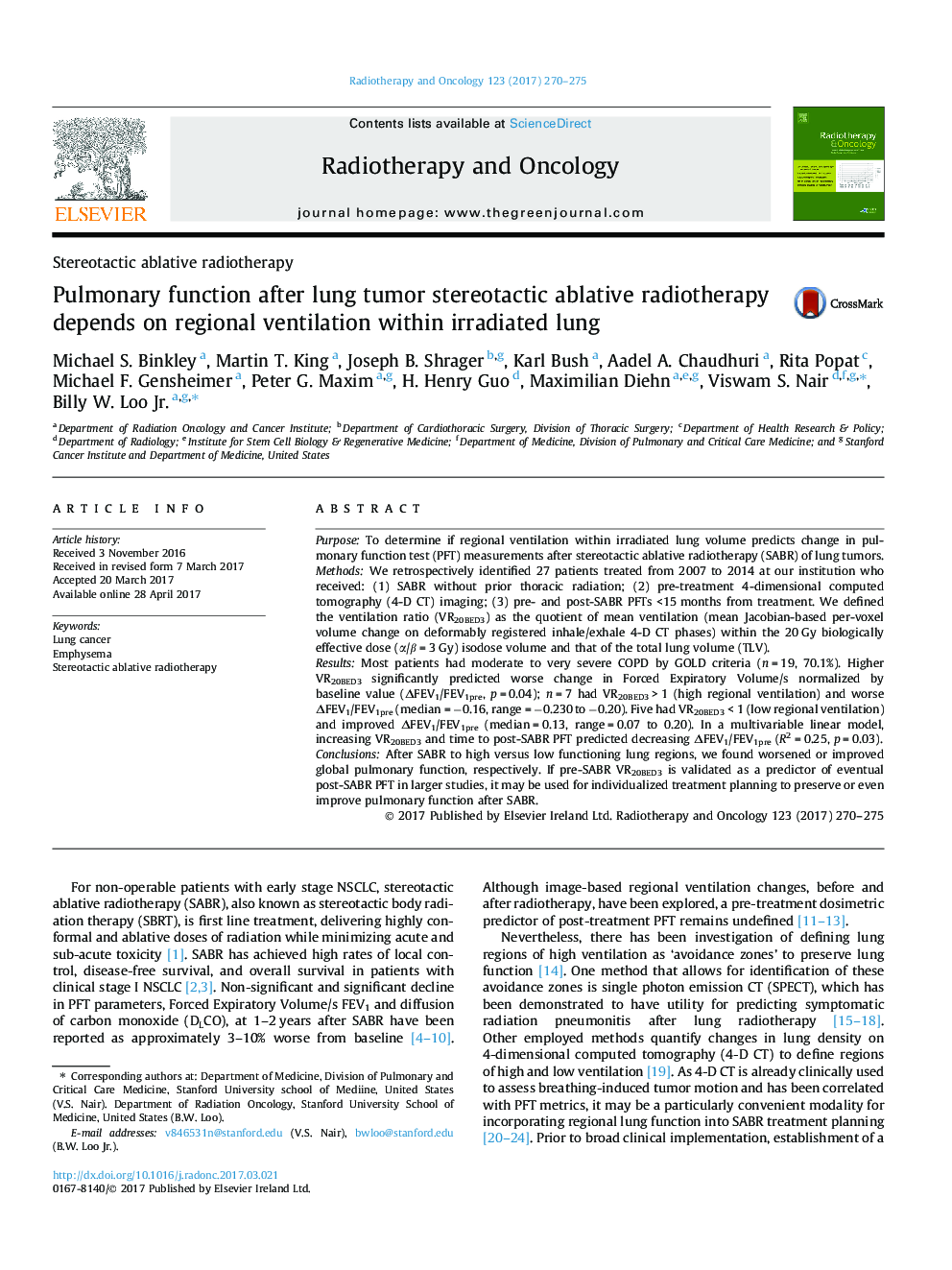| Article ID | Journal | Published Year | Pages | File Type |
|---|---|---|---|---|
| 5529539 | Radiotherapy and Oncology | 2017 | 6 Pages |
PurposeTo determine if regional ventilation within irradiated lung volume predicts change in pulmonary function test (PFT) measurements after stereotactic ablative radiotherapy (SABR) of lung tumors.MethodsWe retrospectively identified 27 patients treated from 2007 to 2014 at our institution who received: (1) SABR without prior thoracic radiation; (2) pre-treatment 4-dimensional computed tomography (4-D CT) imaging; (3) pre- and post-SABR PFTs <15 months from treatment. We defined the ventilation ratio (VR20BED3) as the quotient of mean ventilation (mean Jacobian-based per-voxel volume change on deformably registered inhale/exhale 4-D CT phases) within the 20 Gy biologically effective dose (α/β = 3 Gy) isodose volume and that of the total lung volume (TLV).ResultsMost patients had moderate to very severe COPD by GOLD criteria (n = 19, 70.1%). Higher VR20BED3 significantly predicted worse change in Forced Expiratory Volume/s normalized by baseline value (ÎFEV1/FEV1pre, p = 0.04); n = 7 had VR20BED3 > 1 (high regional ventilation) and worse ÎFEV1/FEV1pre (median = â0.16, range = â0.230 to â0.20). Five had VR20BED3 < 1 (low regional ventilation) and improved ÎFEV1/FEV1pre (median = 0.13, range = 0.07 to 0.20). In a multivariable linear model, increasing VR20BED3 and time to post-SABR PFT predicted decreasing ÎFEV1/FEV1pre (R2 = 0.25, p = 0.03).ConclusionsAfter SABR to high versus low functioning lung regions, we found worsened or improved global pulmonary function, respectively. If pre-SABR VR20BED3 is validated as a predictor of eventual post-SABR PFT in larger studies, it may be used for individualized treatment planning to preserve or even improve pulmonary function after SABR.
